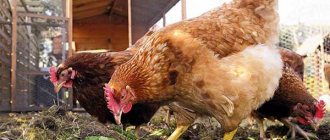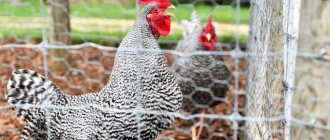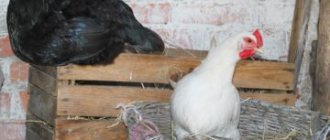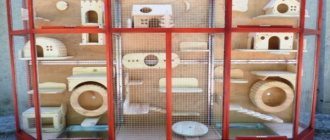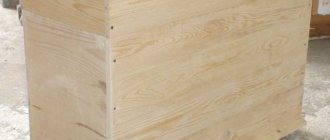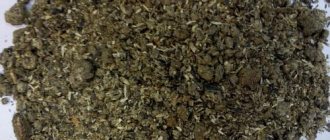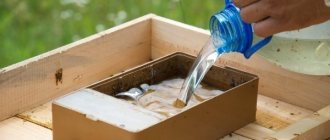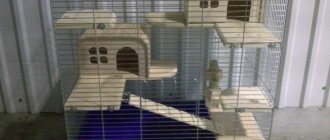Before you get chickens or other poultry, you need to take care of the poultry house. It is important that it is well lit, warm, dry and clean, and also does not allow drafts, but is well ventilated. Many breeders and farmers use traditional materials when building chicken coops: wood, concrete, brick, slag and foam blocks. However, not everyone knows that a good poultry house can be made from polycarbonate, which has almost all the qualities of an ideal material for construction. This article will tell you what its main advantages are and how to properly make a polycarbonate chicken coop.
Advantages of using polycarbonate
Polycarbonate has such qualities as strength and lightness
Polycarbonate as a building material for a poultry house has the following advantages:
- Ease. Thanks to its light weight, it is possible to make a small building yourself without hiring a construction team. In addition, you can save money thanks to an inexpensive and lightweight chicken coop frame.
- Strength. Despite its low cost and low weight, polycarbonate is a very durable and reliable material that can withstand adverse weather conditions and negative external influences. In addition, the material has a long service life.
- Resistant to temperature changes. Unlike many other materials of this type, polycarbonate does not lose strength when weather conditions change and sudden changes in air temperature. In addition, even in the cold season, comfortable conditions for keeping poultry are maintained inside.
- Easy to handle and maintain. It is enough to periodically wipe the surface of the polymer with a cloth. The material and buildings made from it do not need constant and thorough washing.
This article will tell you about a chicken coop for quails.
How to choose quality material
The material is reliable, so a polycarbonate chicken coop will last 10-15 years
In order for these theoretical advantages to become practically useful, it is necessary to choose the right polymer when purchasing. Based on their structure, a distinction is made between monolithic and cellular polycarbonate. The first one is more durable and is used for the construction of floors. Cellular is much cheaper, but is better suited for working with a chicken coop because it is more flexible and lightweight. In addition, this material has better thermal insulation properties, and the top surface is protected from ultraviolet radiation. The minimum permissible thickness of sheets for a poultry house is eight to ten millimeters.
Good material does not burst or break when bent. The service life of Russian-made products is up to ten to twenty years, depending on the manufacturer, while Chinese products are about five to seven. The products of elite foreign brands are currently considered the best, but their purchase in this case is not justified.
Thinking through ventilation
To ventilate the room, you can install folding windows. However, birds are afraid of drafts, so make sure that all the holes are on the same side of the adjustment. If they are opposite each other, drafts will be created. If you are building a polycarbonate chicken coop for the winter, then so that the air entering during ventilation is not so cold, you need to install a supply and exhaust ventilation device with recovery.
The second option is natural ventilation. It is more suitable for summer. This scheme consists of two pipes: one is from the bottom right, the second is from the top left. For better air distribution, a fan is installed inside.
Construction from scratch
Some breeders use ready-made purchased greenhouses as chicken coops. The advantages of this method of keeping chickens include possible cost savings, as well as fertilizing the soil before planting crops. However, relocating chickens to greenhouses is a temporary measure. But it is possible to make a full-fledged poultry house from polycarbonate sheets with your own hands from scratch.
Materials
Building a polycarbonate poultry house from scratch is not difficult.
Before starting construction, it is necessary to prepare the necessary materials. In addition to polymer sheets, you will need:
- pine timber for pouring the foundation;
- profile pipe to create a frame;
- sand;
- polyethylene film;
- leg-split;
- straw and sawdust;
- plywood sheets;
- lumber for making perches;
- self-tapping screws
It is recommended to purchase additional materials in advance and with a small reserve, taking into account possible defects and errors at the production stage. Along with this, you will also need to prepare the following tools:
- drill;
- knives;
- jigsaw;
- an awl or a thin, sharp screwdriver;
- building level;
- hammer.
Arrangement inside the chicken coop
Interior arrangement is important for the good condition of the livestock and their safety. The equipment is also carried out taking into account its own ease of maintenance (cleaning, collecting eggs, etc.).
Equipment installation
During the winter months, additional lighting is required in the chicken coop, at the same time it will also act as heating equipment. Then you should use regular incandescent lamps. Otherwise, LED lighting or infrared lamps are used. For normal life, the bird needs 14 hours of daylight. Make twilight at the location of perches and nests.
For perches, use poles or rounded beams with a cross-section of 5 cm (25 cm for each individual), nests - they can be made of plywood or any boxes can be used. The method of equipping with drinkers and feeders depends on the size of the livestock and the chicken coop. When there are large numbers of birds, it is better to use automated devices.
Foundation installation
A polycarbonate chicken coop can be built without a foundation, but its presence will make the building more resistant to wind
It is possible to build a polycarbonate chicken coop without a foundation. However, its preparation is explained by the following important advantages:
- the foundation will protect the building from moisture getting inside during rain and snowfall;
- the strength of the foundation determines the rigidity, wind resistance and quality of the entire future structure;
- Since the frame for the chicken coop is made of metal, the presence of a foundation will protect it from rust and corrosion.
The installation of the poultry house support is carried out in several stages:
- After completing all the necessary measurements along the perimeter of the future building, you need to dig a trench with a depth of half the height of the beam plus five to seven centimeters for the sand layer. Next, the soil in the hole must be compacted well, then pour out a layer of sand. As soon as the raw material has settled, it is recommended to carry out the compaction procedure again.
- Spill the settled sand with water and wait until it hardens and dries completely. To insulate from water, place plastic film on the bottom of the trench.
- According to the shape of the poultry house, assemble a rectangle or square from the timber , treat its joints with an antiseptic compound, and fasten them with screws or nails. Lower the resulting frame into the hole.
- Using a level and soil correction, level the beam in the trench. Cover the outer surface with film and secure with self-tapping screws.
Some farmers use a concrete foundation. However, in this case, a timber structure will be more convenient, simple and practical.
Insulation
The decision will depend on the type of foundation:
- The pile and column walls are surrounded around the perimeter with wooden boards and foam plastic is laid on top.
- The tape is also covered with boards, then the foam is wrapped in film and laid around the perimeter. The whole thing is covered with thermal insulation material (any kind) and covered with earth.
The walls can be insulated with an additional layer of polycarbonate 4 mm thick from the inside. For greater effect, you can lay foam plastic between the two layers, but this will make the greenhouse opaque, and it will need to be artificially illuminated during the day.
The floor is the coldest part of the greenhouse. You need to approach its equipment very carefully. To make it warm, pour sand in a layer of 1 cm, put a protective mesh on it, place a heating cable with a thermostat and a relay on it, then put another mesh and cover it again with a thin layer of sand.
Frame made of profile pipes
Polycarbonate sheets are attached to the frame using a drill
Polycarbonate sheets must be mounted on a specially prepared frame assembled from shaped metal pipes. It is he who will hold the walls and ceiling. Read about the frame chicken coop here.
To improve the resistance of the poultry house to the wind, it is recommended to make several metal ribs on each side of the future building.
Pipe bending method
In the process of building a frame, it usually becomes necessary to bend profile pipes. To do this, you can use one of the following methods:
- Using the "Turbobender" tool. When using it, the bend is smooth and precise, and in the process of work there is a significant saving of time and effort. However, this tool is expensive, so it is used only in the field of professional construction.
- Cutting and welding. If you have the skills, abilities and experience, using this method you can get an even and neat frame. However, independent use of technology without experience can significantly worsen the appearance of the future structure.
- Sand filling and heating. This method is notable for the fact that it practically does not require additional investments or the purchase of expensive tools. You can use it yourself without any help. However, it is not always possible to bend a profile pipe accurately and evenly. In addition, the technique requires too much time to implement.
Installation of end frames
During the installation of end frames, it is necessary to prepare openings for future windows and doors, as well as vents necessary for ventilation during the hot season. The door recess can be made like a regular door. For the frame, it is enough to prepare a thinner profile - forty by twenty millimeters. The window frame may have an even smaller thickness - twenty by twenty millimeters.
Option for converting a greenhouse into a chicken coop
Installation of the pipe frame should begin with securing the end frames. They can either be welded with a machine or screwed using self-tapping screws and bolts (it all depends on the material from which it is made). After this, you can fasten the remaining frames, which are connected by crossbars from the inside.
Installation of polycarbonate sheets
The last stage of completing the preliminary work is securing the polymer sheets to the frame. This can be done in several steps:
- Lay out the polymer plates along the prepared frame and cut them. Insert them into the prepared frame.
- Using an awl or screwdriver, make several holes in each side of the plate. Pass the twine through them and first fasten the sheets and frame in this way.
- Fasten the polymer plates to the profile using self-tapping screws and a screwdriver.
Arranging nests and perches in a polycarbonate poultry house
The preliminary stage of construction of the poultry house has been completed. Next, you need to begin the interior arrangement of the room.
We should not forget that an additional walking area is recommended for any chicken coop. It can be built using a metal mesh and a wooden or metal frame.
Advice from experienced farmers on keeping poultry
Experienced poultry farmers believe that it is not at all necessary to install expensive heated floors. The main thing is that there are no cracks. If this is a greenhouse, then in cold weather you should thoroughly insulate the foundation with polystyrene foam, make a double floor with a layer of mineral wool and use a large layer of bedding, preferably fermentation. In case of severe frosts, place an oil heater near the door. Snow can also serve as additional insulation.
We can conclude that a chicken coop in a polycarbonate greenhouse in winter is beneficial in any case. With a small herd, you should not spend money on expensive equipment, but with a large herd, on the contrary, you should do everything with the latest technology, since the productivity of the birds will justify the costs.
Internal structure of a polycarbonate poultry house
The arrangement of a polycarbonate chicken coop should be almost identical to that of a conventional wooden or brick one. However, there are some nuances that you should pay attention to during construction.
Lighting
The undoubted advantage of a polycarbonate room is the transparency of the materials, thanks to which solar heat and light easily enters. However, at night, especially in winter, an additional light source is necessary. This is important for comfortable eating and maintaining the egg production of chickens.
Thanks to artificial lighting, daylight hours can be increased to 14 hours
Large poultry farms use lighting power of more than twenty lux. However, in this case, five will be enough. It is important to provide some gradation in which different areas of the chicken coop will be illuminated differently. One suite is enough for chickens to rest and sleep, and from one to four for egg nests. The brightest light should be in areas for eating and drinking water. You can install incandescent lamps from ten to sixty watts, depending on the size of the room.
Daylight hours with the help of artificial lighting should be increased to no more than fourteen hours. Electricity operation should begin at the end of November. In the morning it is recommended to turn on the light after six o'clock in the morning, in the evening - at dusk and until twenty o'clock.
Sudden changes in light can stress hens, affecting their health and egg production.
Heating
In the warm season, the chicken coop does not need heating; in the winter, you can install an infrared lamp
In the summer, additional heating of the chicken coop is not required - polycarbonate easily absorbs and retains solar heat throughout the day. However, in late autumn, winter and early spring, the most capricious breeds of chickens and crosses need a comfortable room temperature. Here, as a heating system, you can use an electric or conventional stove, as well as a special red lamp. If for some reason the use of these heat sources is impossible, it is useful to use a new technology - fermentation mat.
Read about the winter chicken coop here.
Litter
Fermentation litter is an additive that can be purchased in specialized stores. In order for it to start working, you will need to mix sawdust, oat husks and straw into it. This mixture will collect droppings and release additional heat during a chemical reaction. In this case, practically no unpleasant odors will remain.
Find out about ready-made chicken coops at this link.
The finished litter can release thermal energy for three years. At the same time, it will reduce the number of cleanings and prevent skin diseases of chickens.
Ventilation
The fan will provide a constant microclimate in the poultry house
For ventilation purposes, it is possible to make folding windows in the walls of the chicken coop. A profitable and convenient option would be to install a supply and exhaust ventilation device with recovery, which will increase the temperature of the cold air entering the house.
A good option for a ventilation design would also be to install two pipes. One of them will be mounted at the bottom on one side, the other at the top of the opposite side. To improve the quality of such natural ventilation, it is possible to install a small fan to operate for air inflow or outflow.
Tricks and subtleties
When leaving chickens for the winter, you should remember that a greenhouse and a greenhouse are different structures. It is not advisable to keep laying hens in a greenhouse, since it cannot be fully equipped according to the needs of the birds.
The greenhouse provides ample opportunities for housing chickens, caring for them and cleaning. In a greenhouse, they can even lay eggs in winter, although not as actively as in summer.
For example, such popular breeds as Leghorn or cross Highsex are capable of producing up to 300-310 eggs per year, some of which, naturally, occur in the winter.
To ensure that the egg production of chickens does not decline, it is necessary to think through the birds’ diet and even the dishes from which they will eat.
What to assemble the feeder from?
Bunker feeder
Chickens have powerful paws, which they like to use to rake everything that is under these paws. Therefore, feeders are made as closed and raised above the ground as possible.
The second requirement for the feeder: it must have a large perimeter so that all pets can eat from it at the same time if they want.
Otherwise, the birds will begin to show aggression, and weaker individuals will refuse to lay eggs.
Of greatest interest are bunker feeders, also known as dispenser feeders , into which a lot of feed is poured in case the owners are unable to enter the poultry house on time.
They are made from scrap materials, for example, five-liter drinking water cans.
How to make a drinking bowl?
Set of feeder and drinker
Drinkers for chickens are made with the same calculation: so that birds cannot step on them with their paws. This pollutes the water and creates a damp zone around the drinking bowl, which in winter will become a source of infection.
The following types of drinkers are used in chicken coops:
- Open. These drinking bowls are easy to make with your own hands from a sewer pipe. Nozzles are attached to it at both ends to hold water, and several holes for drinking are drilled in the middle.
- Automatic drinking bowls. This is a large container of water sitting on a basin or plate. Water does not pour out of the container completely due to atmospheric pressure.
- Nipple. The bird presses the valve with its beak and receives a small portion of water. It is useful to equip such a drinking bowl with a drip eliminator from below.
Feeders and drinking bowls are placed away from each other. In any case, birds will be careless, scatter some of the food and spill water, and food that has soured in water is a source of infection.
Advantages
The advantages of using polycarbonate buildings do not end with convenience and low cost. In these rooms it is easy to create the most comfortable conditions for the birds.
Comfort
Even in the absence of additional artificial winter heating and lighting, birds can feel comfortable in polycarbonate chicken coops. In the proposed conditions, it is easy to regulate the air temperature and carry out arrangement. As needed, it is easy to replace worn-out parts in the premises and improve the living conditions of chickens with additional technologies.
This material will tell you about do-it-yourself chicken nests.
For easier temperature regulation in the summer, it is recommended to install canopies over the chicken coop.
Benefits and environmental friendliness
Even at high temperatures, polycarbonate does not release toxins
Polycarbonate does not emit toxic substances even at high temperatures, which makes this material as environmentally friendly and safe as possible for people, animals and birds. In addition, the following positive aspects of a polymer chicken coop can be noted:
- since wood is practically not used in the manufacture of poultry houses, funds and resources, including natural ones, are significantly saved;
- chickens can be kept with minimal energy costs;
- bacteria in polymer chicken coops reproduce poorly, so they practically do not form an unpleasant odor;
- used chicken litter can be used as environmentally friendly fertilizer;
- there is no need for constant cleaning and disinfection of the premises;
- chicken meat and eggs retain their environmental friendliness under the proposed conditions.
How to feed chickens correctly
- grain mixture or mixed feed;
- bran moistened with water.
The grain can be boiled, so chickens eat it better, but it can also be given in dry form, there is not much difference. Birds do not disdain food waste, so everything will go into use. Chickens love to nibble green grass, but in winter, unfortunately, this is an unaffordable luxury. It is best to take care in advance and dry the nettles, because with the onset of spring the birds will need vitamins.
If you want your hens to lay a lot of eggs, you will need to choose the right diet for them.
In winter, the body requires replenishment with macroelements and minerals. Greens can be easily replaced with root vegetables and silage. Beets and pumpkins are ideal for laying hens. A huge advantage of such nutrition is that they are stored very well, until spring, until the grass appears. It would be a good idea to add zucchini and their seeds to your diet, which contain a lot of vitamins and calcium. A lack of calcium in chickens is immediately visible by the condition of the eggshells. She becomes soft.
- Carrots, rich in carotene, will also be an excellent treat in winter. It will affect the ability of chickens to lay eggs, while improving their immunity. If you still have sunflower cake after squeezing the oil out of the seeds, you will definitely need to include it in the diet of laying hens. It contains a lot of protein and fat, which are so lacking in winter for life.
- In a separate bowl you need to put chalk, which the chickens will peck little by little. Laying eggs requires a lot of calcium, so you shouldn't forget about minerals.
- Drinkers need to be re-equipped in winter. Water should be heated to a temperature of 15-20 degrees.
- After you stop drinking from the feeder, the water should be poured out to prevent it from freezing. This is necessary so that the birds do not catch a cold.
In order to ensure that keeping chickens in such an unusual structure for them does not cause problems, it is necessary to follow a number of rules.
- , in which birds are located, is not recommended if the outside temperature is below - 15 degrees.
- Chickens begin to lay eggs at the end of February, when the first spring sun appears. It is at this moment that special boxes should be placed for them. Birds lay one egg at a time from the beginning of spring until late autumn; young hens lay eggs more often, but their eggs are smaller in size.
- It is worth noting that keeping birds in a greenhouse is only suitable for a small number, 5-6 individuals. Everyone knows that plants produce oxygen. With birds it's the other way around. They inhale oxygen and exhale carbon dioxide. Metabolism in a chicken’s body occurs very quickly, so one individual produces up to 50 grams of carbon dioxide per day. The carbon dioxide released by 5 chickens is enough to stimulate plant growth. Thanks to this symbiosis, egg production in chickens increases, and the percentage of growth in plants increases.
- For convenience, chickens need to be placed in a small cage. You can also hang it, but not too high. A tray should be placed under the cage to make cleaning the room easier. To avoid unpleasant odors in the greenhouse, it is recommended to clean it frequently. There is another way: add about a 15-centimeter layer of sawdust, which will make your work easier in the future. The layer of droppings accumulated during the day is sprinkled with straw or hay dust. After a while, you will have some excellent organic chicken manure that you can use to grow your plants.
Egg production directly depends on factors such as maintenance. In order to increase the egg production of chickens, it is necessary to maintain comfortable conditions for their living in the greenhouse. The air temperature should be + 15 degrees. Chickens are daylight dependent, so it is necessary. At the same time, daylight hours should not exceed 14 hours. Much depends on the nest where the hen will lay her eggs. The most important thing is to create conditions for the chickens in the greenhouse so that they feel as comfortable as they do in the chicken coop in the summer.
Flaws
Unfortunately, the polymer quickly breaks down, so you will have to periodically repair the room
Despite all these advantages of polycarbonate systems, some disadvantages should be highlighted:
- polymers with a short service life fail too quickly and require mandatory replacement;
- in the summer, ventilation is necessary , since the rooms can be very hot;
- The coop frame must be strong enough to withstand wind and damage that chickens can cause.
Among these disadvantages, the most significant is the relatively short service life of polymers. However, their low cost allows for periodic replacement of materials.
Negative points
Despite the unique qualities of polycarbonate, the sheet thickness is up to 8 millimeters. Thicker material is rarely used for the construction of greenhouses.
Polycarbonate is the main component. And this wall thickness is not enough for birds to live comfortably. There are other disadvantages of keeping chickens in such a greenhouse in winter.
High-quality insulation of a structure requires considerable financial costs.
Rounded shapes are inconvenient for insulation work.
If the greenhouse is actively used for growing vegetables, already in the first months of spring you will have to look for a new shelter for the chickens.
To maintain the egg production of laying hens at the same level, constant heating is required. And as a result, electricity costs.
Before converting a warm chicken coop from a greenhouse, it is necessary to calculate the costs of insulation and maintenance of such a structure in the cold winter months. And make an informed decision.
conclusions
- Making chicken coops from polycarbonate will save money and speed up the building process.
- Using polymer poultry houses is convenient, environmentally friendly and cheap.
- Polymer chicken coops are easy to equip and provide with additional sources of heat and light.
- Operating a poultry house made of polycarbonate reduces the number of cleanings and disinfections at home, simplifies poultry care, and allows you to obtain by-products in the form of natural fertilizers.
Refurbishment for the summer
A chicken coop made from polycarbonate for the winter with your own hands can be converted into a summer version in this way:
- Remove artificial lighting (or simply stop turning it on). This should be done gradually. A sudden change in lighting conditions will cause stress.
- Turn off the heating.
- Remove insulation from the walls, since polycarbonate itself creates a greenhouse effect.
- Create additional ventilation to keep the birds cool. This can be done by replacing the polycarbonate side walls with reinforced film on rolls.
